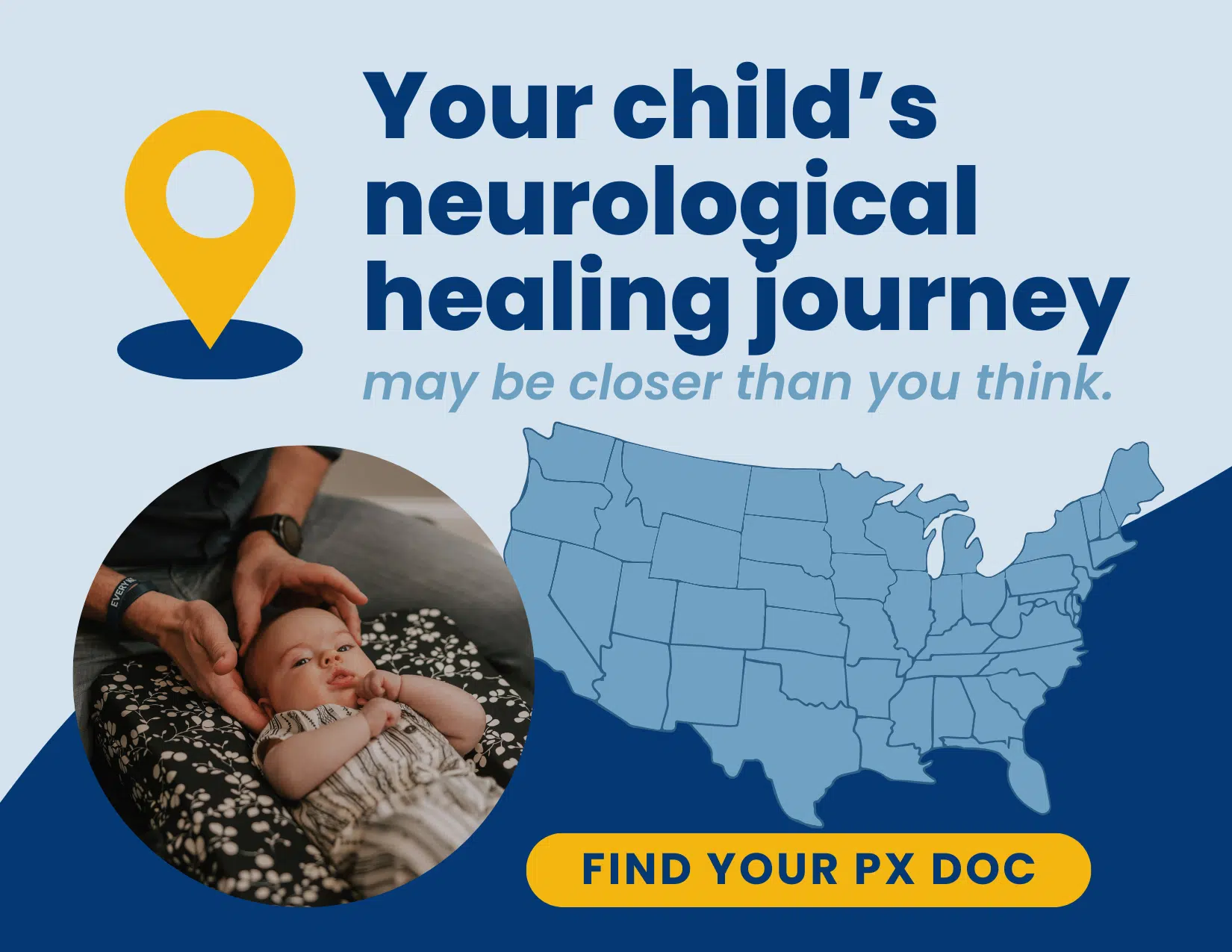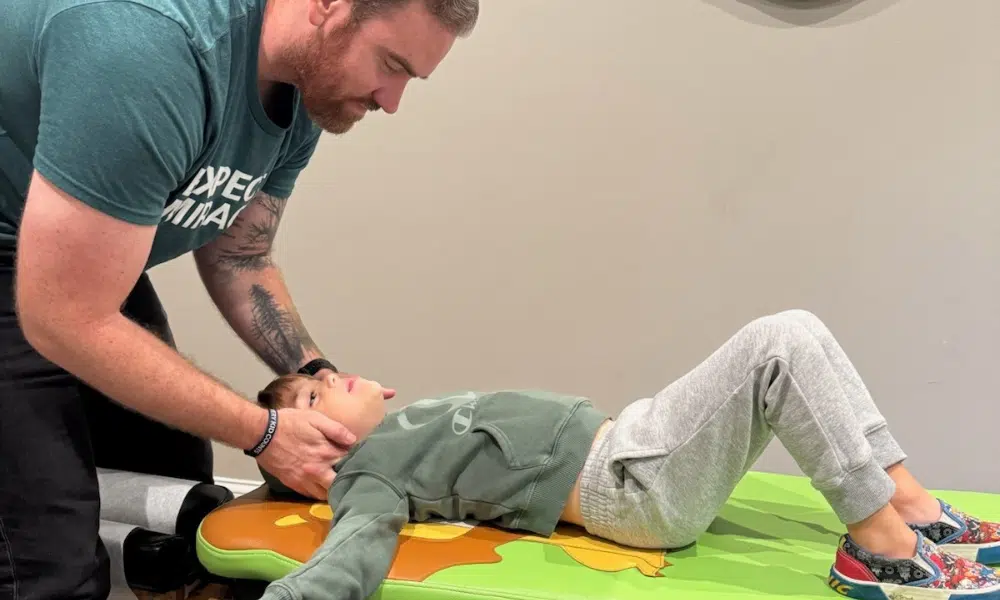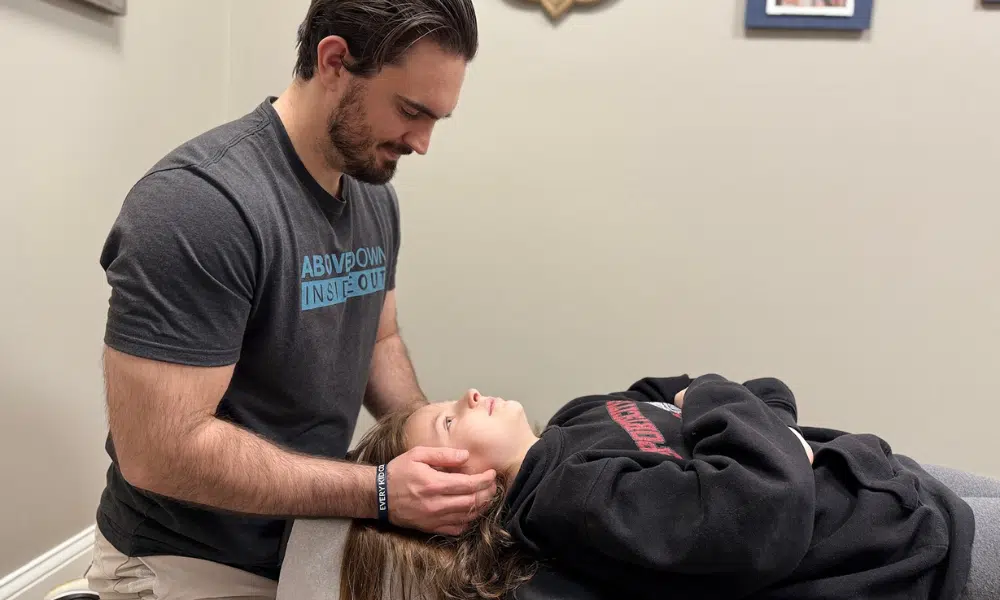Witnessing your child experience a seizure can be one of the most frightening and helpless moments for a parent. The sudden, uncontrollable movements, loss of consciousness, and the fear of not knowing what’s happening or how to help can leave you shaken to your core. In those moments, it’s natural to feel overwhelmed, desperate for answers, and longing for hope that your child won’t always have to suffer this way.
Approximately 4-5% of all children will experience a seizure at some point during their childhood. As you navigate the confusing world of pediatric seizures, you probably find yourself asking, “Why is this happening to my child? What’s causing it, and how can I help them?”
The conventional medical perspective often points to factors such as genetics, brain injuries, infections, or developmental conditions. While these can indeed play a role, there is another crucial piece of the puzzle that is often overlooked: the health and function of your child’s entire nervous system.
Traditional medicine and neurologists tend to focus solely on the brain—using tests like EEGs to measure abnormal electrical activity—but it rarely takes a step back to ask a deeper question: why is the brain so overwhelmed in the first place? The truth is, the brain never works in isolation. It is constantly being influenced by and responding to the rest of the nervous system.
This is where families finally begin to find answers and hope. By looking at the nervous system as a whole, we can uncover the hidden stressors weighing down your child’s brain and shift the focus from simply managing seizures to actually addressing what’s driving them. Our network of specialized pediatric chiropractors has walked with countless families through this journey, helping them discover personalized, medication-free care plans that bring relief, regulation, and healing.
In this article, we’ll explore these overlooked neurological factors in more detail, and show you how the PX Docs approach offers a unique path forward—one that restores hope and brings real answers for families searching for them.
What is a Seizure?
A seizure occurs when there is a sudden, uncontrolled burst of electrical activity in the brain. This abnormal activity can cause changes in behavior, movements, feelings, and consciousness. Seizures can be a frightening experience for both children and their parents, as they often come on suddenly and without warning.
There are two main categories of seizures: generalized and focal. Generalized seizures involve electrical activity throughout the entire brain, while focal seizures are limited to specific areas. The type of seizure a child experiences depends on where abnormal activity occurs in the brain and how much of the brain is affected.
Some of the most common signs of seizures in children include:
- Staring spells or periods of unresponsiveness
- Stiffening of the body or limbs
- Uncontrollable jerking movements (convulsions)
- Loss of consciousness
- Confusion or memory loss
- Lip smacking or chewing movements
- Unusual sensations (e.g., tingling, fear, déjà vu)
Not all seizures are caused by epilepsy. Provoked seizures can result from temporary factors like high fever, low blood sugar, or head trauma. Unprovoked seizures occur without a clear trigger and may indicate an underlying condition such as epilepsy. A child experiencing two or more unprovoked seizures at least 24 hours apart may be diagnosed with epilepsy.
Tonic and clonic seizures are distinct motor seizures with different characteristics. Tonic seizures cause sudden muscle stiffness, potentially leading to falls or temporary breathing difficulties. Clonic seizures involve repetitive, rhythmic jerking movements in one or more body parts. Both types can occur independently, but often appear together in tonic-clonic seizures.
Understanding the different types of seizures and their signs is crucial for parents seeking to support their child’s health and well-being. However, identifying the root cause of seizures is equally important, if not more so, in order to find effective, long-term solutions.
The “Perfect Storm” of Factors Contributing to Seizures
At PX Docs, we recognize that seizures in children often result from a combination of factors that can disrupt the delicate balance of the developing nervous system. We refer to this convergence of challenges as the “Perfect Storm.”
One of the most significant contributors to the Perfect Storm is birth trauma or intervention. The use of interventions such as forceps, vacuum extraction, induction, or C-section delivery can cause physical strain and nervous system stress in the upper neck and brainstem area, leading to a condition known as subluxation. Subluxation occurs when there is interference in the proper functioning of the nervous system due to neurospinal stress and tension.
Prenatal stress is another key factor in the Perfect Storm. Research has shown that maternal stress during pregnancy can elevate the risk of impairing fetal brain development, potentially altering the child’s susceptibility to neurological conditions later in life.
Environmental stressors in early childhood can further exacerbate the effects of subluxation and prenatal stress. Early exposure to antibiotics, toxins, certain medications, and recurrent infections can all contribute to a state of chronic neurological stress and inflammation.
The cumulative impact of these factors can lead to dysregulation of the Autonomic Nervous System, setting the stage for seizures and other neurological challenges.
The Critical Role of the Autonomic Nervous System
To understand how seizures develop, it is essential to recognize the central role of the Autonomic Nervous System (ANS) in regulating brain function. The ANS consists of two branches: the Sympathetic Nervous System, which activates the “fight or flight” response, and the Parasympathetic Nervous System, which promotes “rest, digest, and regulate” functions.
In a healthy nervous system, these two branches work in balance, allowing the body to respond appropriately to stress and return to a state of relaxation afterward. However, when the ANS becomes dysregulated due to factors like subluxation and chronic stress, the Sympathetic Nervous System can become overactive, leading to a state of persistent physiological arousal.
This dysregulation can have a profound impact on the function of the vagus nerve, which plays a crucial role in regulating seizure threshold. When the vagus nerve is not functioning optimally, the brain becomes more susceptible to abnormal seizures and electrical activity.
Additionally, autonomic dysregulation can contribute to inflammation in the brain and body, as well as disruptions in the gut-brain axis. These factors can further lower the seizure threshold and perpetuate a cycle of neurological stress and dysfunction.
Limitations of the Conventional Medical Approach
While conventional medicine has made significant strides in the management of seizures, it often falls short in addressing the underlying neurological imbalances that contribute to these events.
The primary focus of conventional seizure care is suppressing signs through the use of medications. While anti-seizure drugs can be effective in reducing the frequency and severity of seizures, they do not address the root causes of the problem and can come with a host of horrible side effects.
Moreover, the conventional medical approach often fails to take into account the essential connection between the brain, spinal cord, and Autonomic Nervous System in the genesis of seizures. By focusing solely on the brain, practitioners may overlook critical factors contributing to neurological dysfunction.
While EEGs can be helpful in detecting abnormal electrical activity in the brain, they don’t actually reveal where seizures are coming from or what’s triggering them in the first place. An EEG is like a snapshot of the brain’s activity in the moment, but it doesn’t explain the deeper “why” behind the overload.
And for many kids, seizures aren’t just a brain problem—they’re the result of an entire nervous system stuck in stress mode, constantly overwhelming the brain until it misfires. Without looking beyond the EEG and investigating the health of the whole nervous system, families are left with only part of the picture.
Another limitation of the conventional approach is the lack of tools to objectively assess nervous system regulation. Without a clear understanding of a child’s neurological status, it can be challenging to develop a targeted, individualized care plan.
The PX Docs Neurologically-Focused Solution
At PX Docs, we take a fundamentally different approach to addressing seizures in children. Our Neurologically-Focused model of care is designed to identify and address the root causes of seizures, rather than simply masking symptoms.
While we don’t “treat” or “cure” anything, what we do is help restore balance and regulation to the nervous system so the brain is no longer stuck in constant overload. Time and again, we’ve seen that when a child’s body can finally shift out of fight-or-flight and back into a calm, regulated state, the brain is far less likely to misfire. Parents who once felt hopeless after being told medication was the only option now see their children regain health, stability, and a better quality of life—all by addressing the root cause within the nervous system.
The foundation of our approach is the use of INSiGHT scans, a cutting-edge diagnostic tool that allows us to objectively measure nervous system function. By detecting patterns of subluxation and dysautonomia, we can develop a precise, customized plan of care for each child.
Our chiropractic adjustments are designed to restore proper regulation and balance to the nervous system, reducing the effects of subluxation and promoting optimal function of the vagus nerve and other critical regulatory pathways.
By addressing the underlying neurological imbalances that contribute to seizures, we have seen remarkable results in our patients. Many children experience a significant reduction in seizure frequency and severity, as well as improvements in overall health and quality of life.
Take Alice’s story, for example. Her family was living in constant fear as seizures struck every few hours, leaving them traumatized, isolated, and hopeless after trying everything from diets to therapies with no lasting change. When they finally turned to Neurologically-Focused Chiropractic, the scans revealed what her brain and nervous system had been struggling with all along. Within weeks, her seizures started to ease, her moods stabilized, and her spark began to return. Today, Alice actually has seizure freedom, her family has their joy back, and they’re finally experiencing the “boring” “normal” life they once thought impossible. Like being able to go out and enjoy ice cream together as a family.
And you can see the objective change of her nervous system in the progress of her neurological INSiGHT scans!


Empowering Families with Hope and Healing
Our mission is to empower families with the knowledge and tools they need to help their children thrive, even in the face of neurological challenges like seizures.
We believe that by addressing the root causes of seizures and supporting the body’s innate healing potential, we can help children break free from the cycle of medication dependence and achieve lasting improvements in their health and well-being.
Our approach is grounded in research and clinical experience, but it is also deeply rooted in compassion and a commitment to individualized care. We understand that every child’s journey is unique, and we work closely with families to develop a care plan that meets their specific needs and goals.
By combining Neurologically-Focused Chiropractic Care with nutrition, detoxification, and other natural strategies, we provide a comprehensive, drug-free approach to addressing seizures that can transform the lives of children and their families.
A Brighter Future for Children with Seizures
Dealing with seizures in a child can feel overwhelming and leave parents feeling helpless and unsure of where to turn. The uncertainty surrounding your child’s health and future can weigh heavily, but at PX Docs, we are here to remind you that you are not alone in this journey. We aim to provide the knowledge, tools, and care to help parents navigate these challenging circumstances with confidence and hope.
Through a deeper understanding of the underlying factors contributing to seizures, we focus on addressing the root causes rather than just managing them. This comprehensive approach has led to countless success stories, where children experience not only reduced seizure frequency but also significant improvements in their overall health and well-being.
If your child is struggling with seizures, we invite you to visit our directory to find a certified PX Doc in your area and take the first step. Our Neurologically-Focused approach is not a quick fix or a magic bullet, but it is a powerful tool for supporting your child’s true healing potential and helping them achieve their fullest expression of health and vitality.



![[GRID] Calming the Sensory Storm WEBINAR PX Docs Webinar](https://pxdocs.com/wp-content/uploads/2025/11/GRID-Calming-the-Sensory-Storm-WEBINAR.png.webp)


